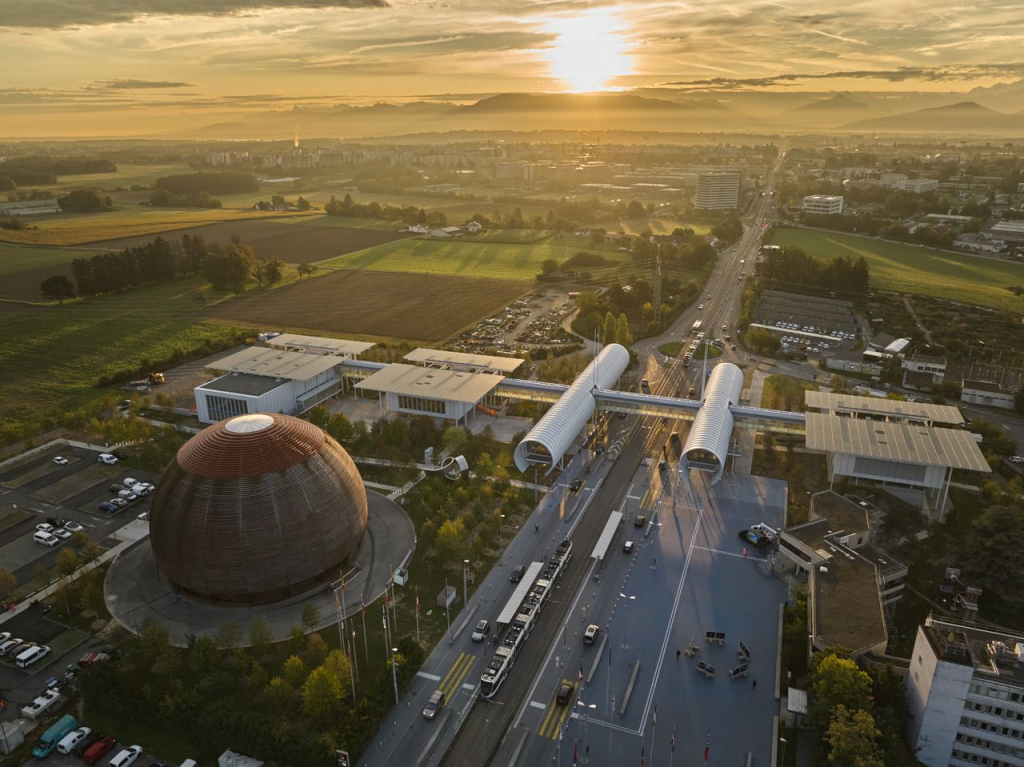The European Organization for Nuclear Research (CERN) is marking its 70th anniversary of foundation which featured a special grand ceremony attended by 38 national delegations. The guests, among others, were the President of the Republic of Serbia as well as heads of state and governments of Italy, Slovakia, Bulgaria, Latvia and Switzerland.
The ceremony was also attended by the President of the European Commission, along with many other scientific, political and economic leaders. As CERN stated, the presence of distinguished high-ranking guests reflected strong support for the mission and ambitions of CERN as the leading laboratory of high-energy physics.
‘It’s my great honour on this day to welcome representatives of our member states and associated members, our observers and partners from around the world,’ said Fabiola Gianotti, Director General of CERN. CERN has been a great success for Europe and its global partners, and our founders would be very proud of what CERN has achieved over the course of seven decades of its existence. Aspirations and values which motivated the founders are firmly anchored in our organization: and they include the pursuit of better scientific knowledge and technological innovations for the benefit of humanity; training and education; cross-border cooperation, diversity and inclusion; knowledge, technology and education available to society without any expenses; and a great dose of boldness and determination to pursue paths bordering the impossible.’
CERN was founded in the aftermath of World War II asv a vision of several renowned scholars and political leaders who wanted to restore the excellence of scientific research in Europe and foster cooperation among countries. Former Yugoslavia was among the 12 founding states.
As more powerful accelerators were built and experiments conducted, many key scientific discoveries took place at CERN, such as the 1973 neutral current revelation and the 1983 detection of W and Z bosons, which are mediators of weak interaction. The 1990s brought extremely precise measurements of the Z bosons and order parameters of the Standard Model.

The biggest accelerator of modern times, the Large Hadron Collider (LHC) was launched in 2009, and it was there that Higgs boson was discovered in 2012. In addition to these scientific milestones, CERN has pioneered innovations such as the multiwire proportional chamber for particle detection which was developed in 1968. This is the place where the World Wide Web was born. Numerous technologies from CERN are nowadays used in various industries, including medical diagnostics and therapy, aviation, etc.
Today, CERN has 24 Member States, 10 Associate Member States, four Observers and many other partners across the globe and an active community with over 17,000 people representing 110 nationalities. The Republic of Serbia rejoined CERN in 2012 as an Associate Member State and became a full member in 2019. Our researchers from numerous institutions, including the Institute of Physics Belgrade, Faculty of Physics at the University of Belgrade, Vinča Nuclear Science Institute and others closely cooperate with CERN and contribute with novel findings.
‘CERN is living proof that human genius does not recognize borders when it is focused on a common goal transcending them,’ said Elizier Rabinovici, CERN Council President.
‘As we celebrate 70 years of CERN, we celebrate a daring vision of founders. We give recognition for the work of generations of CERN staff and their significant scientific and technological contributions which brought about the revelation of secrets of nature and put Europe at the forefront of human achievements.
As stated by this organization, the CERN community continues to work tirelessly on figuring out the mysteries of the Universe. Much remains to be discovered about the Higgs boson and the many other mysteries surrounding the nature and behaviour of matter in the Universe. Up to 95% of the Universe is still dark to us, made up of forms of energy and matter which we cannot see or understand. Discoveries, observations and measurements carried out at CERN across decades are essential to understanding the world we live in.
Engineers, physicists and technicians at CERN have been working for several years on upgrading the existing accelerator which is to become High-Luminosity LHC. This device aims to increase data collection tenfold, and significantly raise the possibilities for discoveries in physics following 2030. Looking far ahead, CERN is currently conducting feasibility studies for the future facility, the Future Circular Collider.
Throughout the anniversary year of CERN, more than 100 events in 63 cities in 28 countries, as well as at CERN, were organized drawing thousands of people. Along with the 70th-anniversary celebration, there were also discussions about open questions in physics and the future of the field, the interaction between fundamental research and cutting-edge technologies, about the role of CERN as a model for international cooperation, but also about how training, education and accessibility can promote inclusivity in the world of science.





